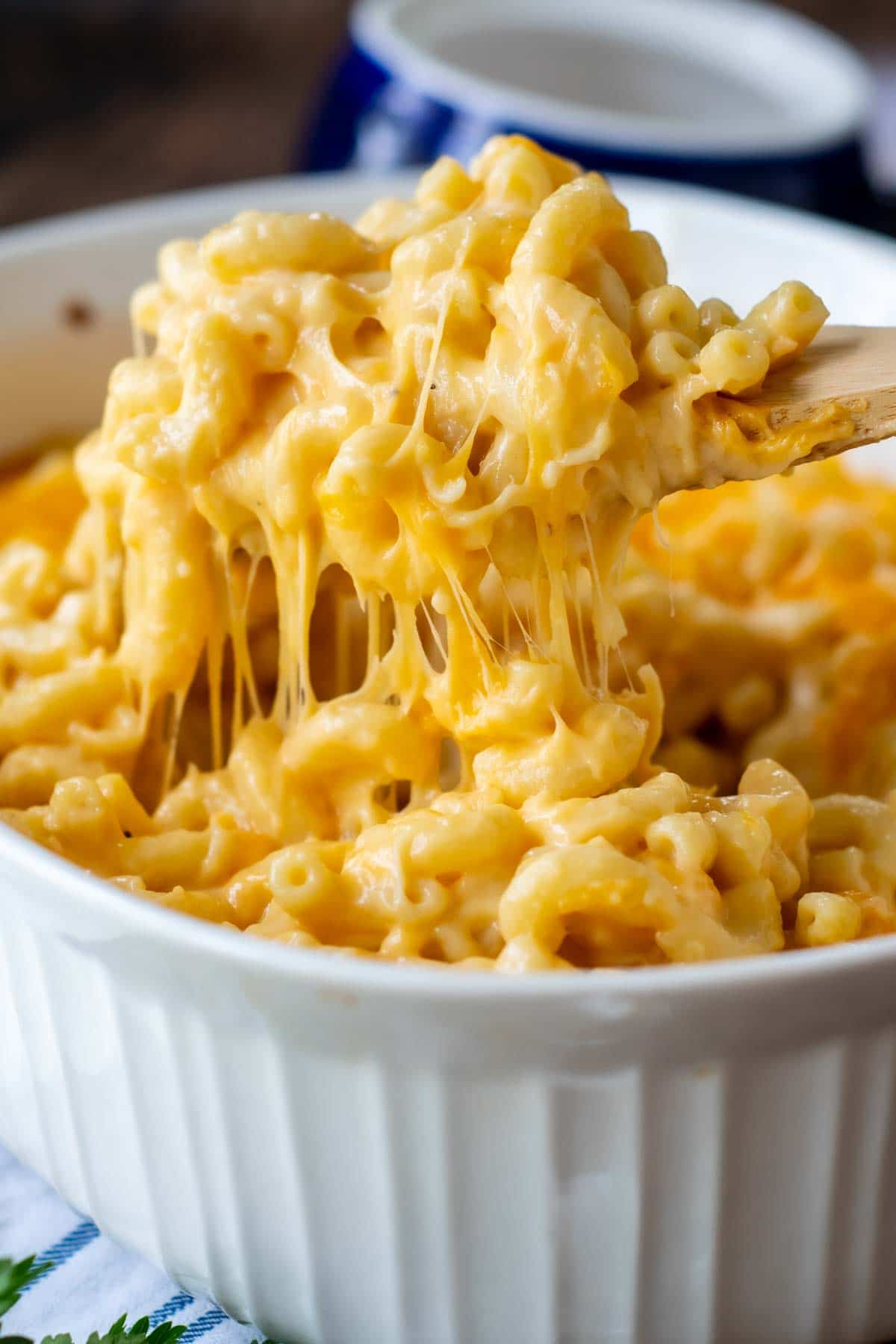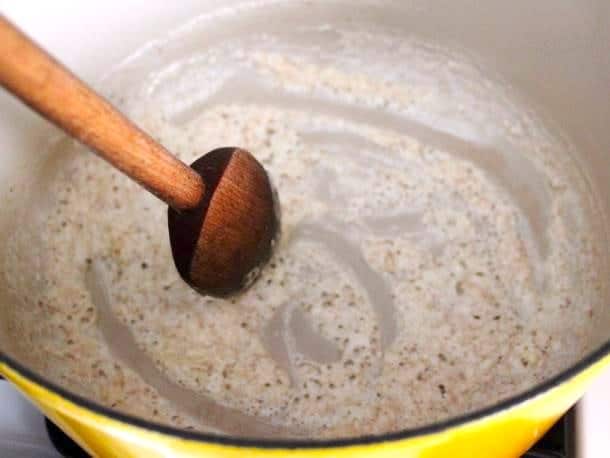- Mac And Cheese Large Quantity
- Gluten Free Roux For Mac And Cheese Made
- Gluten Free Roux For Mac And Cheese From Scratch
- Gluten Free Roux For Mac And Cheese Casserole
Nothing beats classic fall/winter comfort food: creamy gluten-free macaroni and cheese with bacon, baked in the oven with breadcrumbs!
This post may contain affiliate links. Please see my disclosure page for more information. Thanks!

Gluten-Free Macaroni And Cheese In A Few Easy Steps. Preheat your oven to 400° F. In a large bowl combine whisked eggs, evaporated milk, powdered mustard, salt, pepper, and Tabasco and mix together until fully combined. (photo 1, photo 2) Boil the pasta according to the box’s direction in a large pot. Body warming and soul satisfying, my best ever gluten free cheeseburger macaroni skillet is knock-the-chill-outta-ya comfort food. An easy homemade cheese sauce, marinated ground beef, gluten free elbow pasta, and south Louisiana sassified herbs and spices makes this an easy, breezy fail proof wintertime dish.

This macaroni and cheese recipe is different from my other mac and cheese recipe with butternut squash. It uses homemade roux and a few types of fresh cheeses. Leave the blue boxes behind, my friend and upgrade your mac and cheese game. Trust me!
The Gluten-Free Products You'll Need:
Gluten-Free Pasta: You can use any type of gluten-free elbow macaroni for this pasta, but I prefer Barilla as I think it's sturdier and holds up well in the oven. I've also had success with Banza and Ronzoni when making baked pasta dishes.
Mac And Cheese Large Quantity
Wondering what other gluten-free pastas I recommend? Check out this pasta comparison.
Gluten-Free Breadcrumbs: For breadcrumbs, I prefer Aleia's, but you can also use gluten-free sandwich bread like Canyon.
For all of the gluten-free products I recommend in cooking/baking, visit my Amazon shop.
Gluten-Free Flour: And for thickening the roux, I use Cup4Cup, my #1 recommended gluten-free flour blend. I've used it to make everything from fresh pastry, bagels, empanadas, bread, muffins, galettes, cookies, sauces, and more. It has never failed me.
Looking for more recipes that use Cup4Cup? Check out my breads & pastries eBook!
Macaroni and cheese dishes do typically contain a lot of dairy - and I have some sensitivity to it thanks to my IBS. That's why I use dairy-free milk when possible, and lactose-free cheeses, like Cabot, to help reduce the content. This isn't a regular meal for Dylan and me but a special treat!
If you have a dairy allergy or are lactose-intolerant, substitute whatever cheeses, milks, and gluten-free flours that work for you. (Cup4Cup's multipurpose blend does contain milk powder.)
This is the gluten-free macaroni and cheese you'll be dreaming about and won't be able to stop eating. It's dangerously good and baking it in the oven just takes it to the next level. I hope you enjoy it!
Here's the full recipe for gluten-free macaroni and cheese with bacon!
If you love this recipe, please leave a review!Thank you so much!
Gluten-Free Macaroni and Cheese Recipe
Ingredients
- 12 ounces (1 box) gluten-free elbow macaroni
- 6 tablespoon unsalted butter (use dairy-free if needed)
- ⅓ cup gluten-free flour, like Cup4Cup
- 2 cups milk (use lactose-free or dairy-free if needed)
- 4-5 cups shredded cheddar cheese, or mixture of cheddar/Monterey jack
- (save 1 cup for topping) - use dairy-free if needed
- 3-4 slices of gluten-free sandwich bread
- (Or 1 cup GF breadcrumbs)
- 2 tablespoon melted butter or ghee
- Salt & pepper to taste
- Optional mix-ins: chopped bacon, ham, peas, carrots,
Instructions
Preheat oven to 400 degrees Fahrenheit. Grease a large casserole dish or baking dish with ghee or butter.
Pulse gluten-free bread in a food processor until it resembles small crumbs. Toast on a baking sheet in the oven for 7-9 minutes. Mix with 2 tablespoon of melted butter and set aside. (Use 1 cup GF breadcrumbs mixed with ghee instead if you prefer).
Cook macaroni in salted water to al dente - it will continue to cook in the oven. Drain and set aside.
In the same pot that cooked the pasta, melt the butter over medium heat. Add the flour and whisk constantly for 1-2 minutes until bubbly and golden. Next, slowly whisk in the milk until smooth and bubbly, about 2-3 minutes. Whisk in salt and pepper. Finally, whisk in the cheese, two cups at a time, until smooth and creamy. Stir in the cooled pasta until coated in cheese sauce.
Pour into the casserole dish and sprinkle with the remaining 1 cup of cheese, followed by the breadcrumbs. Bake for 15 minutes. Serve warm.
Nutrition Information
Yield 8Serving Size 1Amount Per ServingCalories 1947Total Fat 116gSaturated Fat 64gTrans Fat 3gUnsaturated Fat 37gCholesterol 341mgSodium 2241mgCarbohydrates 145gFiber 20gSugar 9gProtein 97g
The nutrition information on each recipe card is provided as a courtesy and for your convenience. The data is calculated by Nutritionix. You are encouraged to make your own calculations based on your ingredients and preferred nutritional facts calculator. While I try to make sure they are accurate, I cannot guarantee the accuracy of these calculations.
Skip to RecipeGluten Free Roux For Mac And Cheese Made
Serves 8
Time: 1 hour || Active time: 30 minutes
I don’t think vegans ever get sick of Mac & Cheese, or, “Cheeze” or whatever. One of the first recipes I ever tried was from one of my all time favorites, the New Farm Cookbook. It was great for me back then because I always had a ton of people over, and you could make it for a crowd at the drop of a hat. So if you were all sitting around watching Evil Dead 2 on repeat, it was only a matter of time before a magical pot of Mac & Cheese would appear and swallow your soul.
That recipe is still the prototype for many a vegan Mac & Cheese recipe: lots of nooch, garlic, onions and, wait, what’s that? Half a cup of margarine?! This was the 80s and so it wasn’t even non-hydrogenated margarine. It was the real deal – a bright yellow log of pure processed fat. Today we have less ungodly ingredients to work with, but still, I can’t shake the feeling that when I eat those types of Mac & Cheese, I’m eating melted margarine.
So I’ve been toying with different ingredients for the past few years and I’ll probably continue to mess around with it. It’s all about developing flavor and creaminess with ingredients that are still really accessible and really delicious, but also way less processed, and, well really real.
To keep things from being one note, I wanted to build flavor with a few simple methods and ingredients. Like all great Mac & Cheese recipes, this one begins with a roux. Flour is cooked in olive oil, lending a toasty flavor and giving the finished sauce extra body and creaminess. If you’ve never made a roux before then this will be a great skill to add to your repertoire! And speaking of creaminess, cashews are given their standard vegan treatment: a long soak in water and then a horrifying (for them) trip in the food processor, to be pureed until they’re silky smooth.
So I’ve been playing with various ratios and ingredients, and it always comes out good and creamy, but I wanted something different, tangier, more interesting. Cheese is aged, giving it flavor and nuance. There’s always mustard (an ingredient even in the New Farm recipe), miso, lemon…but I hit upon an ingredient that really gave me the depth I was looking for…sauerkraut! Since the average home cook (myself included) isn’t really set up for aging stuff, I wanted something that’s already fermented, and sauerkraut really works.
This mac is my favorite yet! (But that still doesn’t stop me from adding some Frank’s Red Hot.) And of course I don’t totally break with tradition, I used a little turmeric and a touch of nutritional yeast for that telltale yellow that tells you you’re eating “cheeze” not “cheese.”
Recipe notes:
~You really need to blend the beejeezus out of the cashews and sauerkraut. Although it won’t be completely creamy until after it’s cooked, it should still be relatively smooth, with absolutely no chunks, when it comes out of the food processor. I think a Vitamix type thing would work here, too, but I don’t have one myself.
~Make sure that the roux is cooked and toasty before streaming in the veggie broth. It really makes a difference in the final flavor, so get your roux a really beautiful gravy color.
~You can use any smallish pasta. I love to use chiocciole because it can hold plenty of sauce, and I just find the shape pleasing. Small shells or traditional macaroni are both great choices, too.
~To soak cashews, just place them in a bowl and submerge with water. Soak for at least an hour, preferably two, or up to overnight.
~And lastly, the type of veggie broth you use makes a huge difference. If I use my own homemade broth, I make sure it’s super assertive. If you use the type of broth that comes from a powder or concentrate, that is totally cool, just make it a bit stronger than you usually do.
1 lb small pasta like shells, macaroni or chiocciole
1 1/2 cups cashews, soaked (see recipe note)
4 cups broth, divided
4 tablespoons olive oil, divided
4 cloves garlic, minced
1 small onion, diced
2 cups sauerkraut
1/3 cup all purpose flour

1/2 teaspoon tumeric
Several dashes fresh black pepper
2 tablespoons nutritional yeast (optional)
1/2 teaspoon salt
1 tablespoon fresh lemon juice
First boil salted water for the pasta. Cook pasta and drain. In the meantime, prepare the rest of the recipe.
Place the soaked cashews and 2 cups of the vegetable broth in a food processor and blend until smooth, scraping the sides of the food processor with a spatula occasionally to make sure you get everything. This could take 5 minutes.
In the meantime, preheat a large pan (preferably cast iron) over medium heat. Saute the onions and garlic and a pinch of salt in a tablespoon of the oil, until onions are softened.
Drain the sauerkraut in a sieve, pushing it into the sieve to remove as much moisture as possible. Add to the pan just to heat through, a minute or two.
Transfer sauerkraut mixture to the food processor with the cashew mixture. Once again, puree until relatively smooth. There will be some texture, just make sure it’s not chunky.
Wipe out the pan that you sauteed the onions in and preheat it over medium heat once again. Add 3 tablespoons of oil, along with the flour. It should become a gooey clump. You’re now making a roux! Add a little bit more olive oil if necessary. Toast the roux for about 15 minutes, until it smells toasty and turns a medium brown. Stir practically the whole time so that it cooks evenly.
Gluten Free Roux For Mac And Cheese From Scratch
Now stream in remaining 2 cups of broth, whisking constantly so that it doesn’t clump. Whisk until thick and smooth, about 2 minutes.
Stream in the cashew sauerkraut mixture, and whisk until well incorporated. Add the tumeric, black pepper, nutritional yeast if using, salt and fresh lemon juice. Heat through and stir occasionally, allowing the mixture to thicken.
Preheat oven to 350 F and lightly grease an 11 x 13 casserole with olive oil.
Gluten Free Roux For Mac And Cheese Casserole
Add the cooked pasta back to the pasta pot and pour in the sauce. Taste for salt and pepper. Mix to coat, then transfer to the casserole dish. Cover casserole with tin foil and bake for 20 minutes. Remove tin foil and bake an additional 5 minutes. Serve hot!